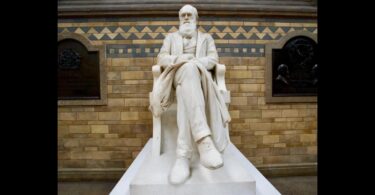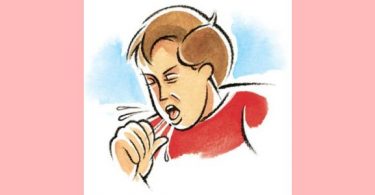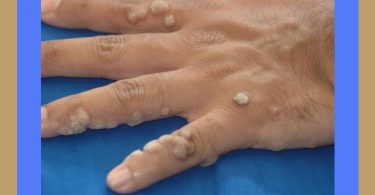Abstract:
Auto immune diseases can be treated homoeopathically. Here Ankylosing spondylitis (Homeopathy for Ankylosing Spondylitis), one of the autoimmune diseases is discussed in detail, with the signs and symptoms, and also how to overcome this disease with homoeopathy.
Introduction:
Autoimmune diseases are the kind of diseases where the individual’s own body starts to attack the natural immune system. This is a condition in which the immune system sees its own body parts as foreign bodies and proteins called auto-antibiotics are being released to attack the healthy cells.
Ankylosing Spondylitis:
This is a disease which is rheumatic in nature and affects the entire body. The exact cause is not known but genetic indications has been identified.
Patho-physiology:
The person suffering from ankylosing spondylitis will have a particular gene known as human leucocytic antigen (HLA-27) in the blood. Not all people who have HLA-27 are affected by this disease, but 90% are affected. 1Acomplex interaction takes place with the immune system to produce this disease.
Raised serum level of Immunoglobulin A (Ig A)
+
Acute phase reactants of inflammation
+
immune system of body
+
Human Leucocytic antigen-27 (HLA-27)
Another probability is:
Class I MHC Molecule HLA B-27
+
T-Cell immune response
The HLA B-27 has an antigen CD8 + T Cells that makes the immune system attack the fibro-cartilage. These patients produce high amounts of interleukin 10 (IL-10) due to CD+ T cells. Tumor Necrosis Factor α (TNF α) and interferons are produced less.
Symptoms:
(Enthesis – Insertion of a tendon, ligament, capsule or fascia into bone.)
In ankylosing spondylitis, enthesis in the vertebra gets inflamed.
- Low back pain – Sacro iliac joint, that is, the enthesis at this region gets inflamed causing pain.
- Neck stiffness and back stiffness. 2
- Pain and stiffness will be more in the mornings and night. Pain gets relieved by warm shower and light exercise.
Early stages:
- May be accompanied with fever, loss of appetite and general discomfort. 3
Commonly affected areas are:
- Spine
- Neck
- Ribs
- Shoulder joint
- Hips
- Thighs
- Joints of hands
- Joints of feet
Lab tests:
- Blood test – to find HLA B-27 in blood
- There are no specific antibody tests for this disease.
Physical examination:
- Schober test: To measure the degree of lumbar forward flexion. The patient is asked to touch the toe.
- Gaenslen test: Stresses sacro-iliac joints. 6 The hip joint is extended in supine position. 7
- Chin-Brow Measurement: Normal Chest expansion will be compromised in case of affection in thoracic spine.
- Range of motion and asymmetry.
X-Ray Findings:
- Blurry erosions (wearing away) or hardening/thickening of fibrous tissue (sclerosis) on both sacro-iliac joints.
- Space reduction in the facet joints, due to loss of cartilage. It can get fused and become indistinguishable.
- Kyphosis or lordosis.
- Spinal fracture anywhere in spinal column.
- Abnormal Square like appearance in the lumbar vertebrae due to erosion.
- Bamboo Spine Appearance. 6
Homoeopathic Management:
Repertory:
The repertory along with the rubric that I have selected for this condition is:
- Homoeopathic Complete repertory by Robin Murphy:
Clinical – ANKYLOSING, spondylitis
Remedies selected from Murphy’s Repertory in the Clinical chapter show the following gradations
Aesculus hippocastanum – 3 grade
-
- Backache affecting sacrum and Hips; worse walking or stooping
- Lameness in the neck; aching between shoulder blades(cervical spondylosis)
Kalmia latifolia – 3 grade
- Pain from the neck radiates down the arm (cervical spondylosis)
- Pain down the back, as if it would break (lumbago); in localised regions of the spine through the shoulders
- Lumbar pain of nervous origin
- Pain from hips to knees and feet. 8
Rhustoxicodendron – 2 grade
-
- This remedy affects the fibrous tissue markedly joints, tendons, sheaths, aponeurosis, producing pain and stiffness
- Motion always “limber’s up” the patient, and hence he feels better for a time from a change of position
- Pain and stiffness in the lumbosacral region; better by motion or lying on something hard; worse while sitting
- Stiffness in the nape of the neck
- Limbs stiff
- Rheumatic pains spread over a large surface at the nape of neck, loins, and extremities
- Rheumatism in cold season
Natrum muriaticum – 2 grade
-
-
- Pain in back, with desire for some firm support. Better by pressure on the back.
- Numbness and tingling of fingers and lower extremities.
- Cracking in joints on Motion
-
Argentum – 2 grade
-
-
-
- The chief action is centered on the articulations and their component elements, bones, cartilages and ligaments.
- Severe backache, must walk bent,with oppression of chest
- Rheumatic affection of joints, especially elbow and knee.
-
-
Conium maculatum – 2 grade
-
- Painful stiffness of the legs
- Dull aching in the lumbar and sacral region.
- Coccycodynia
- Ill effects of shocks and bruises to the spine.
Agaricus – 1 grade
-
- Lumbago, worse in open air.
- Stiff all over
- Pain over the hips
- Rheumatism, better motion
- Weakness in loins.
- Crick in the back
- Pain, spine sensitive to touch
Causticum – 1 grade
-
- Stiffness between the shoulders.
- Dull pain in the nape of neck
- Left sided sciatica, with numbness.
- Tearing pain in joints
- Rheumatic tearing pains in limb; better by warmth, especially heat of bed
- Burning in joints
Cimicifuga – 1 grade
-
- Spine very sensitive, especially the upper part (cervical spondylosis)
- Stiffness and contraction in neck and back (Cerbro-spinal meningitis
- Rheumatic pains in muscles of back and neck.
- Pain in lumbar and sacral region, down the thighs and through the hips.
- Crick in the back
Kaliumcarbonicum – 1 grade
-
- Stiffness and paralytic feeling in the back
- Burning in spine
- Pain in the nates, thighs and hip joint
- Lumbago with sharp pains extending to the thighs
- Hip disease
General Management:
- Exercise to maintain flexibility to improve posture.
- Application of heat on the stiff joints and tight muscles to ease pain and stiffness.
- Quit smoking. 5
- Intake of calcium and Vitamin D should be increased.
Bibiliography:
- https://www.google.com/amp/s/www.news-medical.net/amp/health/Ankylosing-Spondylitis-Pathophysiology.aspx
- https://www.spondylitis.org/Ankylosing-Spondylitis/Symptoms
- https://www.medicalnewstoday.com/articles/317584.php
- https://www.mayoclinic.org/diseases-conditions/ankylosing-spondylitis/diagnosis-treatment/drc-20354813
- https://www.spineuniverse.com/conditions/spinal-arthritis/ankylosing-spondylitis/exams-tests-ankylosing-spondylitis
- https://en.wikipedia.org/wiki/Gaenslen%27s_test
- Boericke’s new manual of homoeopathic materiamedica with repertory
Boericke, William.2007. New Delhi: B. Jain Publishers




